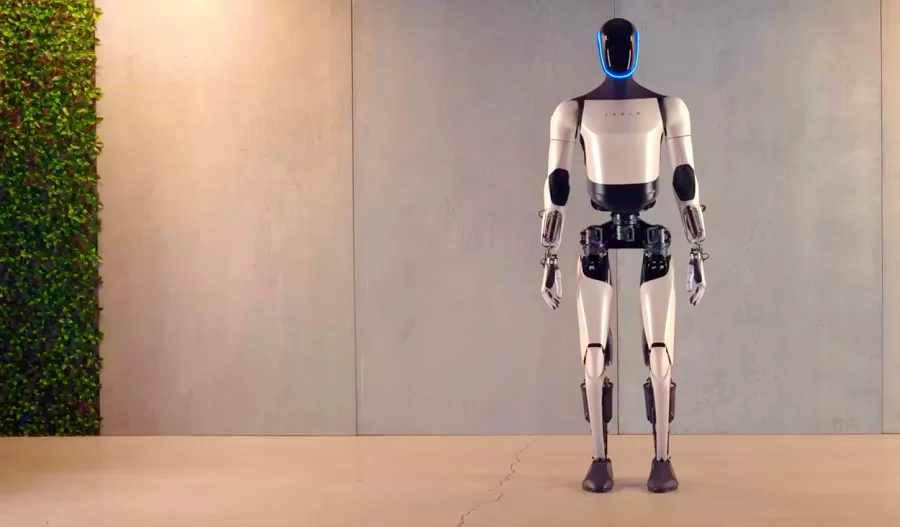Technology
Tiangong: China’s Open-Source Humanoid Robot Redefining Robotics

- Tiangong, China’s open-source humanoid robot, offers advanced capabilities and adaptability, aiming to democratise cutting-edge robotics for global researchers and industries.
- With an open-source and collaborative approach, Tiangong is expected to propel innovation and collaboration amongst the global robotics community, looking and coordinating with the fulfilment of China’s ambitious aims for robotic leadership in the country.
A new way of making waves in robot-based developments has been formed by National China’s entry into this sector, which was made possible through the innovative open humanoid robot, Tiangong. It is a revolution, through the introduction not only of the power of technology but also the innovation that will make cutting-edge robotics accessible for everyone. Serving not only as an extra limb but also as an innovative program for people in scientific research, development, and industry across the globe, it is also intended to bring the integration of bioscience into daily life.
Tiangong: The Marvel of Technology
Tiangong is like an average adult, with an incredible height of 163 cm and weight of 43 kilograms. The technology of electric robots originated in the Beijing Humanoid Robot Innovation Centre, which firmly remains stable at a maximum speed of 6 kilometres per hour. This robot is highly agile and equipped with the most modern electric actuators as well as state-of-the-art sensors for 3D vision, a visual perception system, and power sensors to enable the robot’s movements to be smooth and precise.
More than fine walking and running, Tiangong reveals fine points of climbing stairs and adapting to inclines through gravel, sand, and uneven terrain. When it falls, the robot recovers, adjusting rapidly; this underscores its ability to adapt to sudden changes. This arguably maximises both Tiangong and subsequent Tiangong robotic solutions in industries and research problems.
Open Access: A Seasick Game Changer
But what’s unique about it is that it comes with an open-source platform. Every design plan, software, and schematic has been openly developed since April. Developers can easily tune it for any number of uses, from warehouse management to power plant surveillance and applications where it has already successfully been fielded.
Two models are available: the lower-spec Tiangong 1.0 LITE and the higher-spec Tiangong Pro. The robot does this in an open-source image by drastically reducing costs and hastening the development timeline, laying a strong foundation for innovation towards the future. This cements it as a possible global collaborative-staged development tool for tomorrow’s robotics standards.
The National Vision on Progression in Robotics
Tiangong is the cornerstone of China’s broader vision of international leadership in robotics. By 2025, China plans to have mass production of humanoid robots; at the same time, the country plans to have machines that can learn independently and create by the year 2027. With Tiangong now at the front, China is quickly cementing its position in the world as the creative robotics centre.
Beyond Beijing’s Humanoid Robot Innovation Centre lies a rather wide robotic ecosystem in the People’s Republic of China. Trendsetting companies such as UBtech Robotics and Unitree, as well as high-level universities such as Peking University and Huazhong University of Science and Technology, are redefining the level of human-robot interaction by effectively pushing boundaries. Our research team maintains this form of an open-source design, which bolsters the collaboration and standardisation in the field.
Blueprints for the Global Collaboration
Tiangong, as an open-source framework, and its impact are put to the test in the global robotics industry with the overall flow of technology from shared designs and freely distributed software making strides in terms of familiar points of departure in terms of global competition. The project aims to reach out to the global public, stating that it will enable easy collaboration across different sections in solving numerous challenges.
The innovation centre has earmarked plans to release other tools and resources for Tiangong by the end of this year that would add more power to this opportunity. It rather appears that the future of Tiangong is bright; such a tall task is to improve even already existing systems or enable brand new applications.
The Robots Federation’s Now
Thus, the already ‘near-term’ event is pretty significant for China, charting the course towards its extensive robotics goals and vision of a more interconnected and more technological world. It will be significant as the breakthrough that would set China on the global robotics map, due to its availability as an open-source model, superior capacities, and issuability in making customisations.
Such an opportunity to be innovative and to design and have certain new humanoid robotics made could also exist for researchers and developers. When newer tools and resources come out, the Tiangong may have revised those formulas to bring us closer to the day in the future when humanoid robots were something ordinary to have in daily life. The facet of the robotics revolution is quite near, with Pangaea at the forefront.

















































